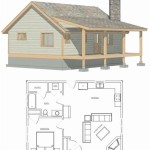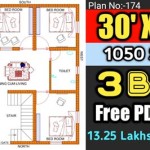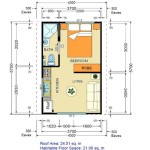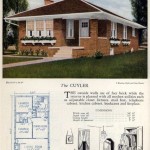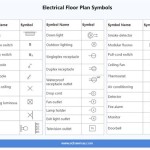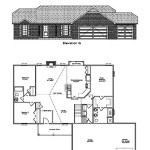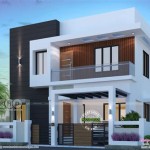Modern Post and Beam House Plans: A Fusion of Tradition and Innovation
Post and beam construction, a building method characterized by heavy timbers forming a structural frame, has a rich history spanning centuries. In modern applications, post and beam construction offers a compelling blend of historical charm and contemporary design aesthetics. Modern post and beam house plans are increasingly sought after for their unique visual appeal, structural integrity, and design flexibility, resulting in homes that are both beautiful and functional.
The essence of post and beam construction lies in its distinct structural system. Unlike conventional framing methods that rely on numerous smaller studs and joists, post and beam utilizes substantial vertical posts and horizontal beams to carry the load of the building. This framework is typically exposed, becoming a prominent design feature within the home's interior. This visual character is a primary driver for those choosing post and beam designs.
Modern post and beam construction incorporates advancements in materials and building techniques, allowing for designs that surpass the limitations of traditional methods. Engineered lumber products, such as glue-laminated timber (glulam) and laminated veneer lumber (LVL), offer greater strength, dimensional stability, and design flexibility compared to solid timbers. Additionally, modern insulation techniques ensure energy efficiency, addressing a common concern associated with older timber frame structures.
The Aesthetic Appeal of Modern Post and Beam Homes
The visual appeal of modern post and beam homes is undeniable. The exposed timber frame creates a sense of warmth, natural beauty, and structural honesty. The substantial timbers add visual weight and character to the interior space, creating a focal point that commands attention. The design often emphasizes natural light, with large windows strategically placed to capture views and illuminate the exposed timber framework.
The inherent openness of post and beam construction allows for flexible floor plans and expansive living spaces. The absence of load-bearing walls provides greater freedom in interior layout, enabling homeowners to create customized spaces that cater to their specific needs and preferences. This open concept design is particularly well-suited for modern lifestyles that prioritize social interaction and fluid movement within the home.
Modern post and beam designs often incorporate a blend of natural materials, such as wood, stone, and glass, to create a cohesive and harmonious aesthetic. The use of natural materials complements the exposed timber frame and enhances the overall sense of warmth and connection to nature. The combination of natural textures and contemporary finishes results in homes that are both timeless and sophisticated.
Beyond the interior, post and beam construction can also be adapted to a variety of architectural styles, ranging from rustic cabins to sleek, contemporary residences. The flexibility of the construction method allows for the creation of unique and personalized homes that reflect the individual tastes and preferences of the homeowner. The exterior of a post and beam home can be clad in a variety of materials, such as wood siding, stone veneer, or stucco, allowing for seamless integration with the surrounding environment.
Advantages of Choosing a Modern Post and Beam Home
Beyond aesthetics, modern post and beam homes offer several practical advantages. The inherent strength of the timber frame provides exceptional structural stability, making these homes resilient to seismic activity and extreme weather conditions. When properly designed and constructed, post and beam homes can withstand the test of time, offering long-term durability and value.
The open floor plans characteristic of post and beam construction can contribute to enhanced natural light and ventilation. Large windows and skylights can be strategically placed to maximize daylight penetration, reducing the need for artificial lighting and creating a brighter and more inviting interior environment. The open flow of air can also improve ventilation, promoting healthier indoor air quality.
While the initial cost of post and beam construction may be higher than conventional framing, the long-term benefits can outweigh the initial investment. The durability and longevity of the timber frame can reduce maintenance costs over time. Additionally, the energy efficiency of modern post and beam homes, achieved through advanced insulation and passive solar design strategies, can lead to significant energy savings.
The use of sustainable materials is another key advantage of modern post and beam construction. Timber is a renewable resource, and the use of engineered lumber products can further enhance the sustainability of the building process. By utilizing timber sourced from sustainably managed forests, homeowners can reduce their environmental footprint and contribute to responsible forestry practices.
Furthermore, the prefabrication of timber components can streamline the construction process and reduce on-site labor costs. The timber frame can be manufactured off-site and then assembled on-site, minimizing construction time and reducing the impact on the surrounding environment. This efficient construction process can also lead to cost savings and improved project management.
Considerations When Planning a Modern Post and Beam Home
While modern post and beam construction offers numerous benefits, it is important to consider certain factors during the planning process. Working with an experienced architect or designer who understands the nuances of post and beam construction is crucial to ensuring a successful project. A qualified designer can help homeowners create a design that maximizes the potential of the timber frame while addressing their specific needs and preferences.
Proper insulation is essential to ensure energy efficiency in a post and beam home. The large timbers can create thermal bridges, allowing heat to escape from the interior. To mitigate this, it is important to incorporate advanced insulation techniques, such as structural insulated panels (SIPs) or spray foam insulation, to create a continuous thermal barrier.
Moisture management is another critical consideration in post and beam construction. Timber is susceptible to moisture damage, so it is important to ensure proper drainage and ventilation to prevent rot and decay. Proper detailing around windows and doors, as well as the use of water-resistant barriers, can help protect the timber frame from moisture intrusion.
The cost of post and beam construction can vary depending on the size and complexity of the design, the type of timber used, and the level of customization. It is important to develop a detailed budget and work with a reputable contractor who has experience in post and beam construction to ensure that the project stays on track financially.
Local building codes and regulations may also impact the design and construction of a post and beam home. It is important to consult with local building officials to ensure that the design complies with all applicable codes and regulations. This may require obtaining permits for structural engineering and fire safety, especially depending on the timber species used and fire-resistance ratings.

Habitat Post Beam

Modern Post And Beam Homes Logangate Timber

Modern Timber Frame Homes Riverbend Floor Plans

Modern Post And Beam Homes Logangate Timber

Post And Beam House Plans Unique Home Basement Architecture Exterior

Modern Post And Beam Homes Logangate Timber

Modern Post And Beam Homes Logangate Timber

Contemporary Design Ideas Pictures Remodel And Decor Shed Roof Architecture Ecological House

Modern Post And Beam Homes Logangate Timber

Residential Floor Plans American Post Beam Homes Modern Solutions To Traditional Living

